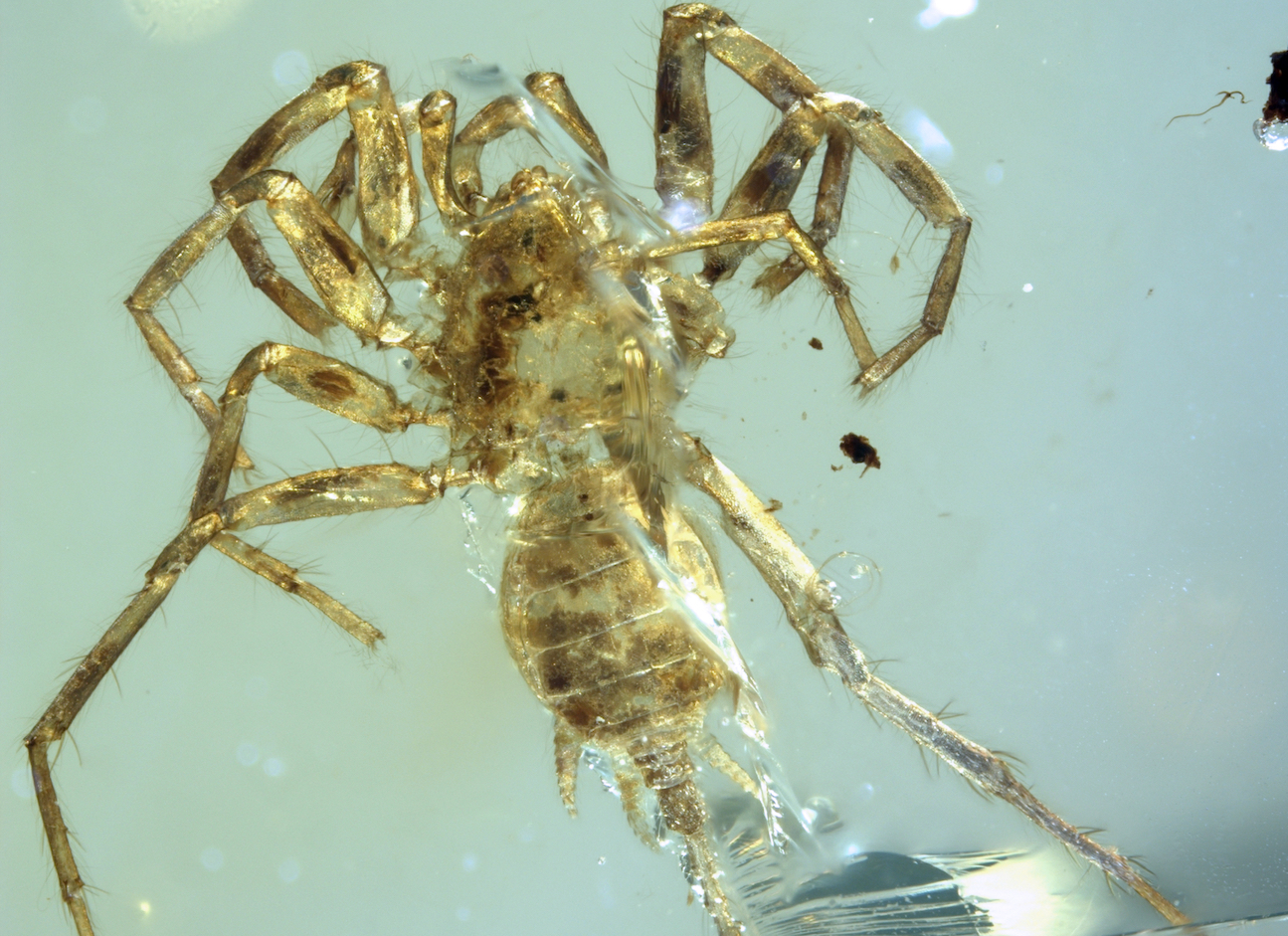
Strange spider with a tail found in 100 million-year-old amber
The remains of a previously unknown arachnid have been discovered in amber from Myanmar. The specimen, which resembles a spider with a tail, dates back 100 million years to the mid-Cretaceous age.
Paul Selden of the Paleontological Institute and Department of Geology at the University of Kansas was part of the international research team that described the insect.
“There’s been a lot of amber being produced from northern Myanmar and its interest stepped up about ten years ago when it was discovered this amber was mid-Cretaceous; therefore, all the insects found in it were much older than first thought,” said Selden.
“It’s been coming into China where dealers have been selling to research institutions. These specimens became available last year to Nanjing Institute of Geology and Paleontology.”
The new animal has many features that belong to spiders including fangs, male pedipalps, four walking legs, and silk-producing spinnerets. Unlike a spider, however, it has a long flagellum or tail.
Four tiny new specimens have been found, measuring only about 2.5 millimeters in length aside from a nearly 3-millimeter-long tail.
“Any sort of flagelliform appendage tends to be like an antenna,” said Selden. “It’s for sensing the environment. Animals that have a long whippy tail tend to have it for sensory purposes.”
The species was named Chimerarachne after the Greek mythological Chimera, a hybrid creature composed of the parts of more than one animal. At this point, not much is known about the creature’s behavior.
“We can only speculate that, because it was trapped in amber, we assume it was living on or around tree trunks,” said Selden. “Amber is fossilized resin, so for a spider to have become trapped, it may well have lived under bark or in the moss at the foot of a tree.”
Selden explained that, despite the fact the tailed spider had spinnerets, it is unlikely that it spun webs.
“We don’t know if it wove webs,” said Selden.. “Spinnerets are used to produce silk but for a whole host of reasons — to wrap eggs, to make burrows, to make sleeping hammocks or just to leave behind trails. If they live in burrows and leave, they leave a trail so they can find their way back. These all evolved before spiders made it up into the air and made insect traps. Spiders went up into the air when the insects went up into the air. I presume that it didn’t make webs that stretched across bushes. However, like all spiders it would have been a carnivore and would have eaten insects, I imagine.”
The study is published in Nature Ecology & Evolution.
—
By Chrissy Sexton, Earth.com Staff Writer
Image Credit: University of Kansas | KU News Service












